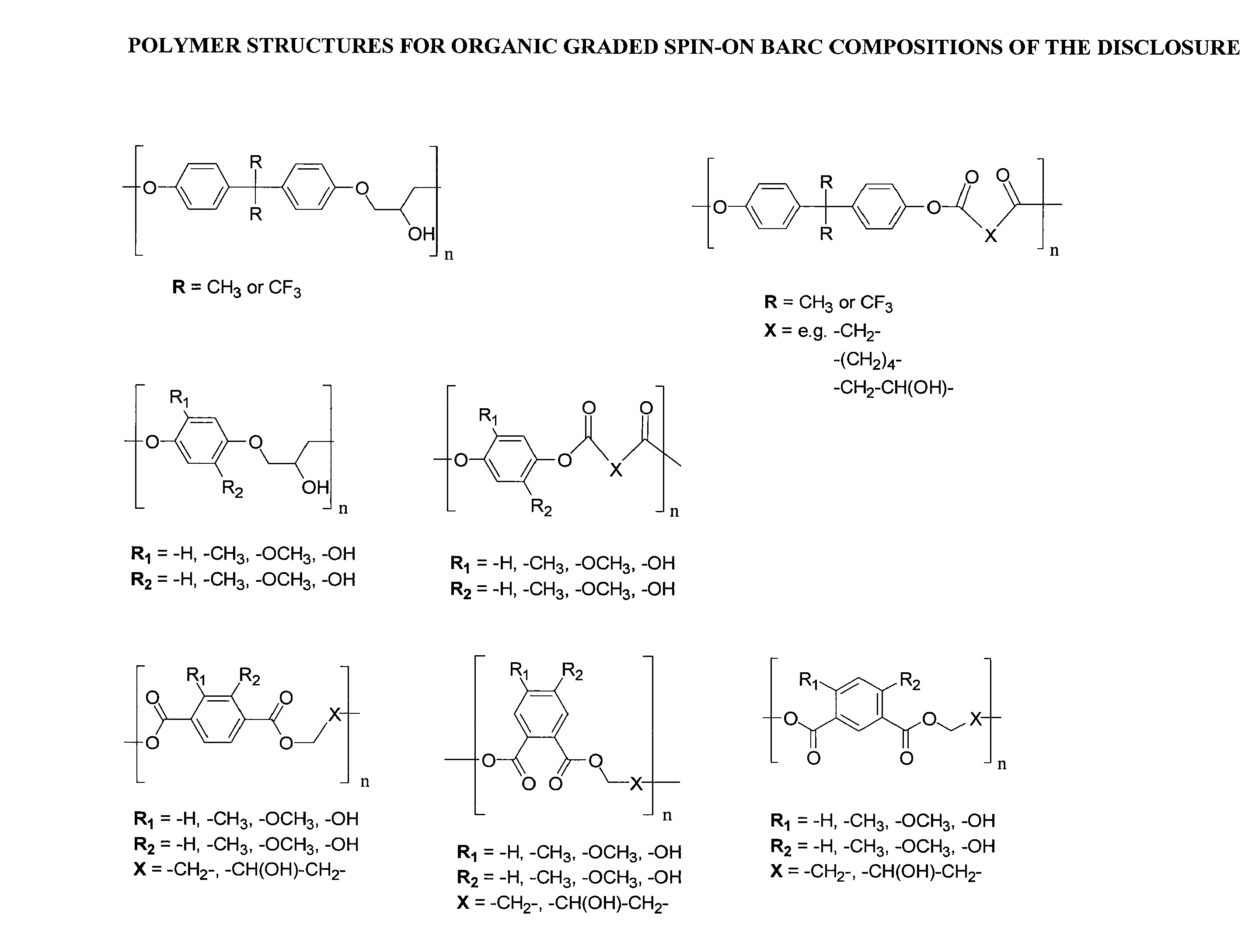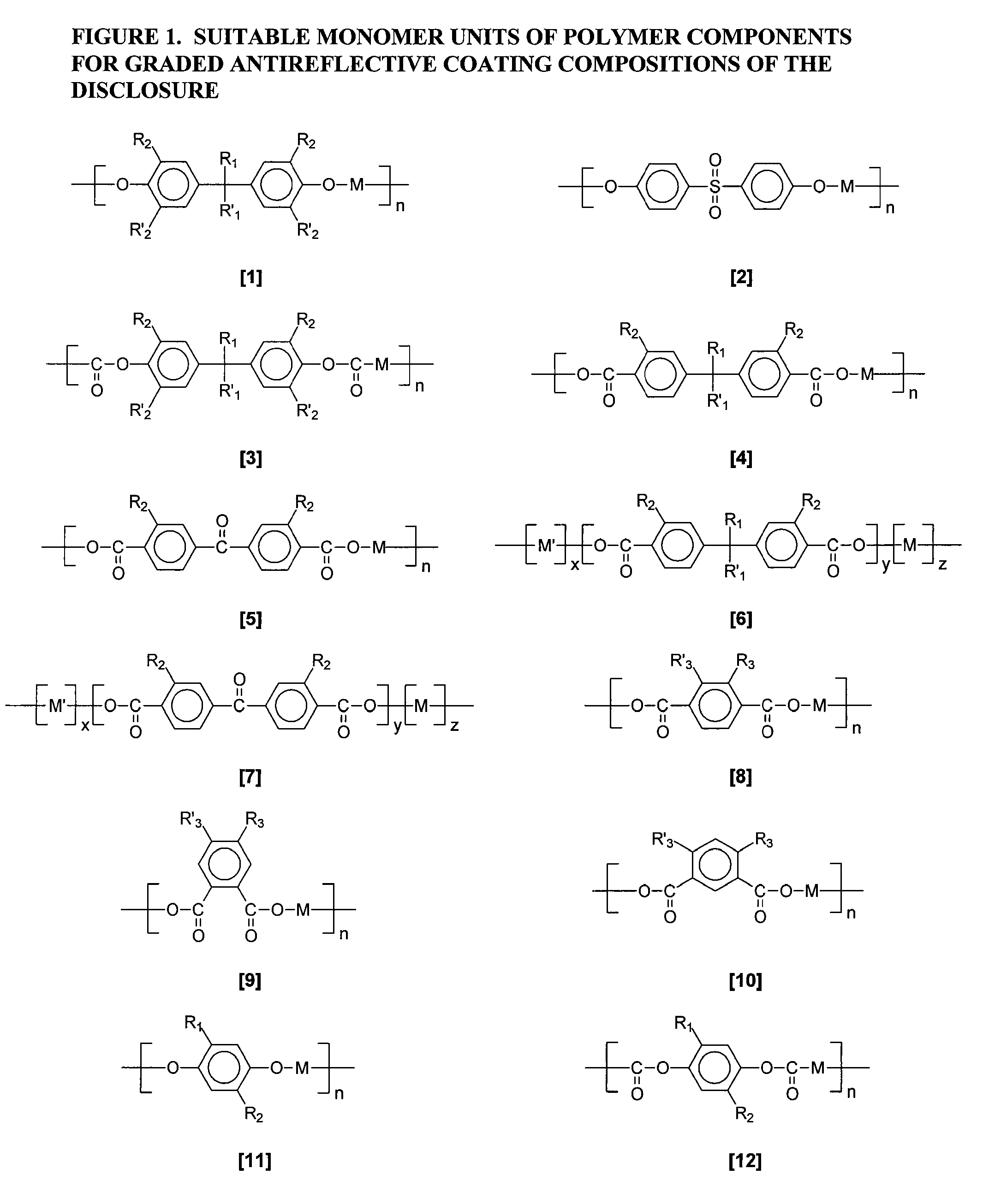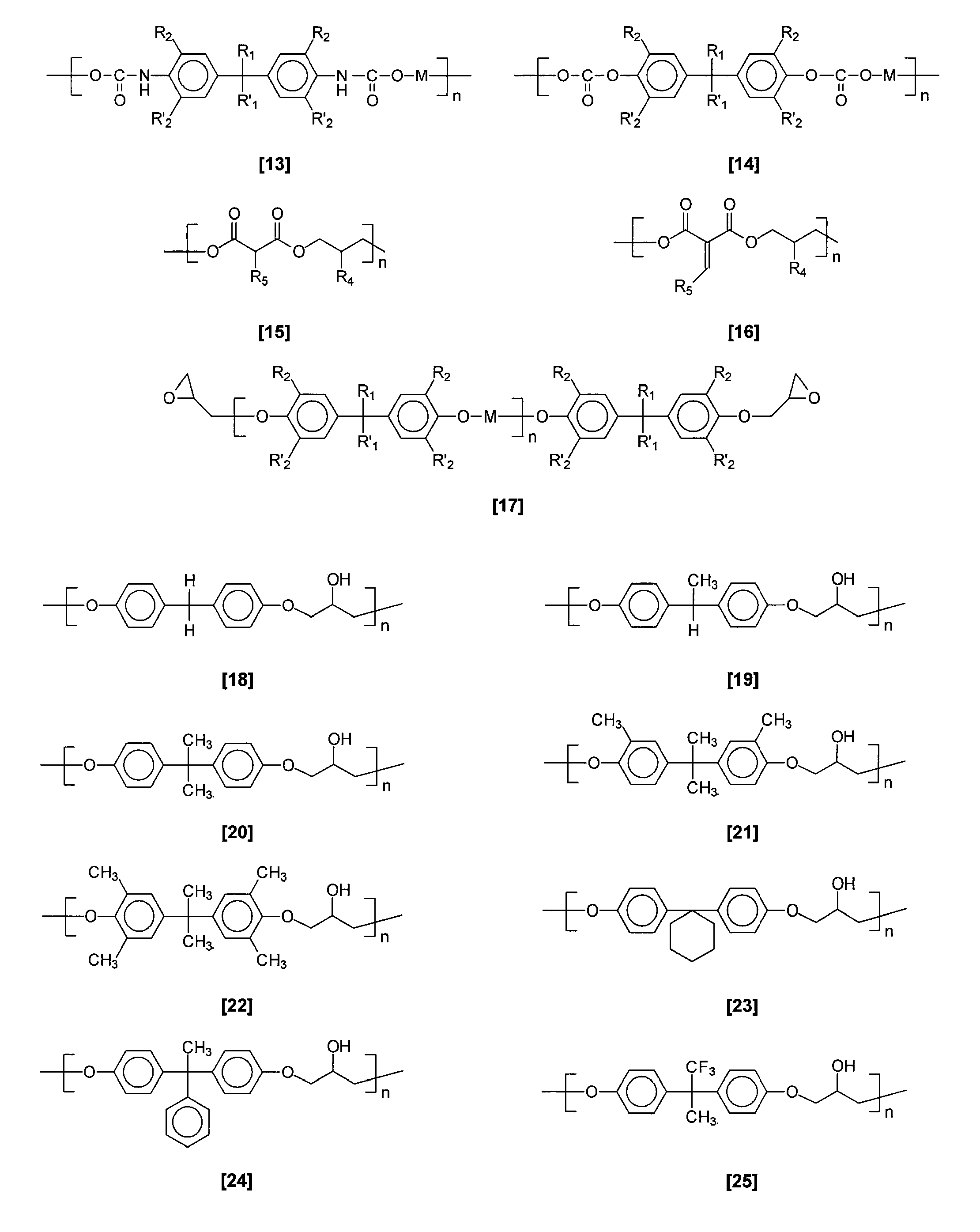Organic graded spin on barc compositions for high na lithography
a composition and high na technology, applied in the field of polymer compositions, can solve the problems of non-uniform photoresist linewidth upon development, deterioration of printed image quality, and variation of linewidth
- Summary
- Abstract
- Description
- Claims
- Application Information
AI Technical Summary
Benefits of technology
Problems solved by technology
Method used
Image
Examples
example 1
[0078]Materials Synthesis (Polymer 43)—A round bottom flask was charged with pyridine (5 mL) and glycerol (5.1 mmol, 470 mg). 4,4′-Methylene-bis(phenyl isocyanate) (5 mmol, 1.25 g) was added and the reaction mixture was stirred for 20 hours at ambient temperature. Then it was poured into 100 mL of 1M HCl, the solids were filtered off and vacuum dried. The material was further purified by dissolving in DMF and pouring into vigorously stirred water. After filtration and vacuum drying, 800 mg of polymer 43 was obtained.
example 2
[0079]Optical and Physical Properties—The optical constants (the index of refraction n and the extinction coefficient k) of individual components suitable for graded BARC applications are measured at a radiation wavelength of 193 nm using a Variable Angle Spectroscopic Ellipsometer (VASE) manufactured by J. A. Woollam, Inc. The optical properties of individual polymer components are shown in FIG. 3.
example 3
[0080]Formulation—Polymer components are dissolved in propylene glycol monomethyl ether acetate (PGMEA) in individual concentrations of 50 parts by weight each (1.8% by weight each with respect to the solvent). One polymer component has an extinction coefficient k higher than 0.5. Another polymer component has an extinction coefficient k lower than 0.5. A crosslinking agent tetramethoxymethyl glycoluril, available from DayChem, in a concentration of 10 parts by weight and di(t-butylphenyl)iodonium perfluorobutylsulfonate (DtBPI—PFBuS) in a concentration of 5 parts by weight are added to the solution, achieving 4.2 wt. % by weight of total solids.
PUM
 Login to View More
Login to View More Abstract
Description
Claims
Application Information
 Login to View More
Login to View More - R&D
- Intellectual Property
- Life Sciences
- Materials
- Tech Scout
- Unparalleled Data Quality
- Higher Quality Content
- 60% Fewer Hallucinations
Browse by: Latest US Patents, China's latest patents, Technical Efficacy Thesaurus, Application Domain, Technology Topic, Popular Technical Reports.
© 2025 PatSnap. All rights reserved.Legal|Privacy policy|Modern Slavery Act Transparency Statement|Sitemap|About US| Contact US: help@patsnap.com



